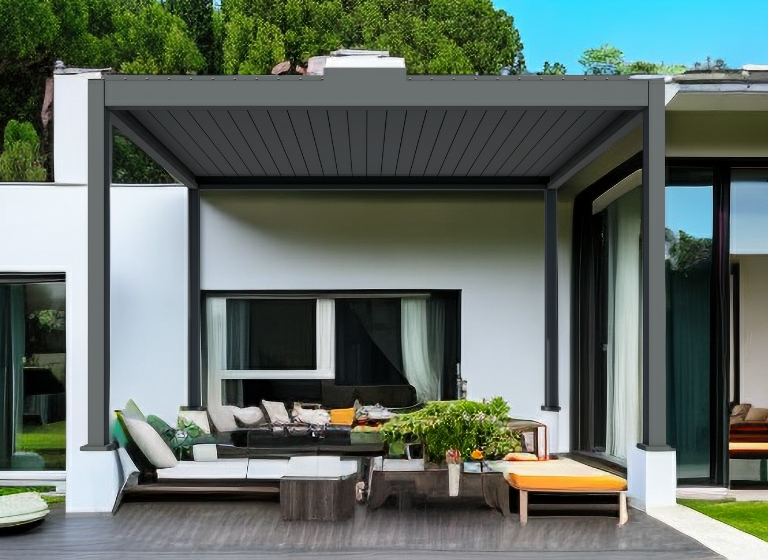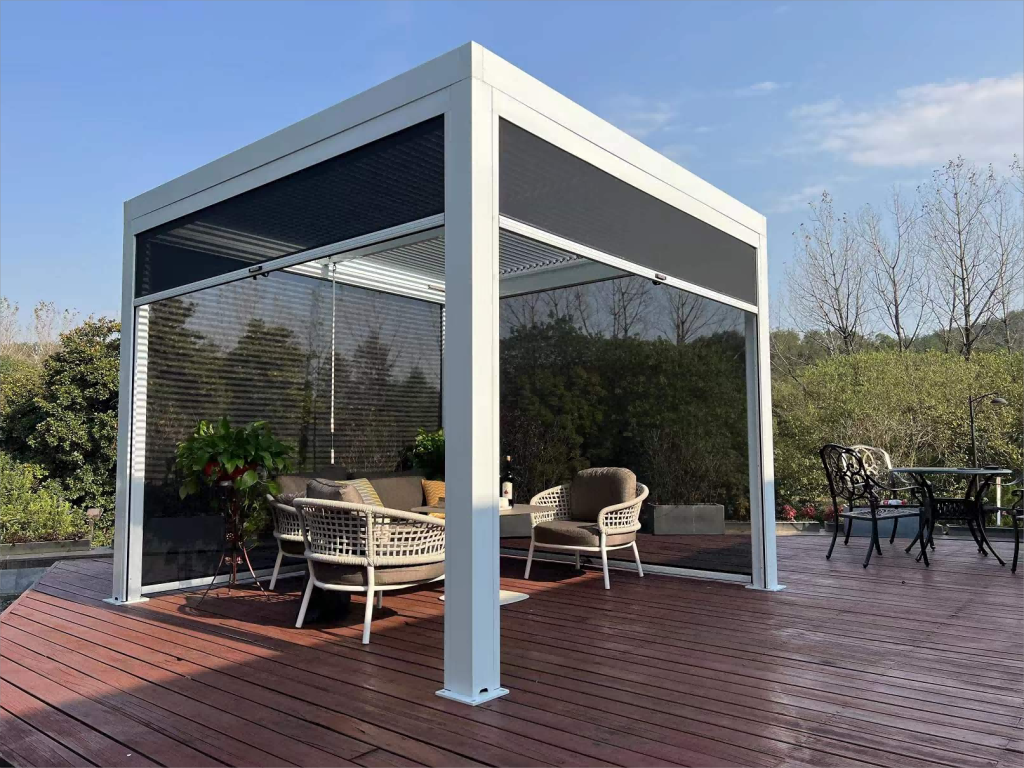
New Zealand’s breathtaking landscapes and dynamic weather patterns are part of its charm, but they also pose challenges for outdoor structures like aluminum pergolas. With gusts that can rival the strength of a charging bull, ensuring the stability of these pergola becomes paramount. Let’s delve into the discussion of whether aluminum pergolas can withstand New Zealand’s strong winds and explore additional measures to bolster their stability.
The Resilience of Aluminum:
Aluminum, renowned for its strength-to-weight ratio and corrosion resistance, stands as a stalwart contender against the elements. Unlike traditional materials such as wood or steel, aluminum offers a unique advantage in its ability to withstand harsh weather conditions without succumbing to rust or decay. Its lightweight nature also allows for easier installation and maneuverability, making it a preferred choice for outdoor structures in windy locales like New Zealand.
Engineering for Endurance:
While aluminum pavilions boast inherent durability, their ability to withstand high winds hinges on meticulous engineering and construction. Design factors such as frame strength, anchoring systems, and aerodynamic profiles play pivotal roles in enhancing stability. Reinforced joints, sturdy support beams, and strategic placement of anchor points are among the features that contribute to withstanding wind loads.
Moreover, modern advancements in engineering techniques, such as computer-aided design (CAD) and finite element analysis (FEA), enable manufacturers to simulate various wind scenarios and optimize pavilion designs for maximum resilience. By subjecting prototypes to rigorous testing, including wind tunnel experiments, engineers can fine-tune structural integrity and identify potential weak points before production.
Supplementary Measures for Stability:
In addition to robust construction, supplementary measures can further fortify aluminum pavilions against New Zealand’s tempestuous winds. These measures may include:
Guy Lines and Tie-Downs: Attaching guy lines or tie-downs to anchor points and securing them to the ground can distribute wind loads more evenly and prevent uplift during gusts.
Windbreaks and Foliage: Strategically positioning natural or artificial windbreaks, such as trees, shrubs, or privacy screens, can mitigate wind force and create a more sheltered environment around the pergola.
Adjustable Louvers and Canopies: Installing adjustable louvers or canopies allows for dynamic control of airflow and wind exposure, enabling users to adapt the pavilion’s configuration based on prevailing weather conditions.
Foundation Reinforcement: Strengthening the pavilion’s foundation through methods like concrete footings or ground anchors provides added stability and prevents shifting or displacement in high winds.
except the above mothos, choose oscar shades‘ luxury strong pergola will be a option, which the strong material and weight of the profiles can withstand the strong wind in New Zealand.
Conclusion:
While New Zealand’s formidable winds pose a formidable challenge, aluminum pavilions equipped with robust engineering and supplementary measures can indeed withstand the tempest. Through a combination of advanced materials, meticulous design, and prudent installation practices, these pergola offer a resilient retreat amidst the country’s untamed beauty, inviting residents and visitors alike to embrace the elements with confidence.
Rights reserved by:www.oscarshades.com



Pingback: Can Pergolas Withstand High Winds? - Oscar Shades
Very interesting information!Perfect just what I was looking for!Leadership